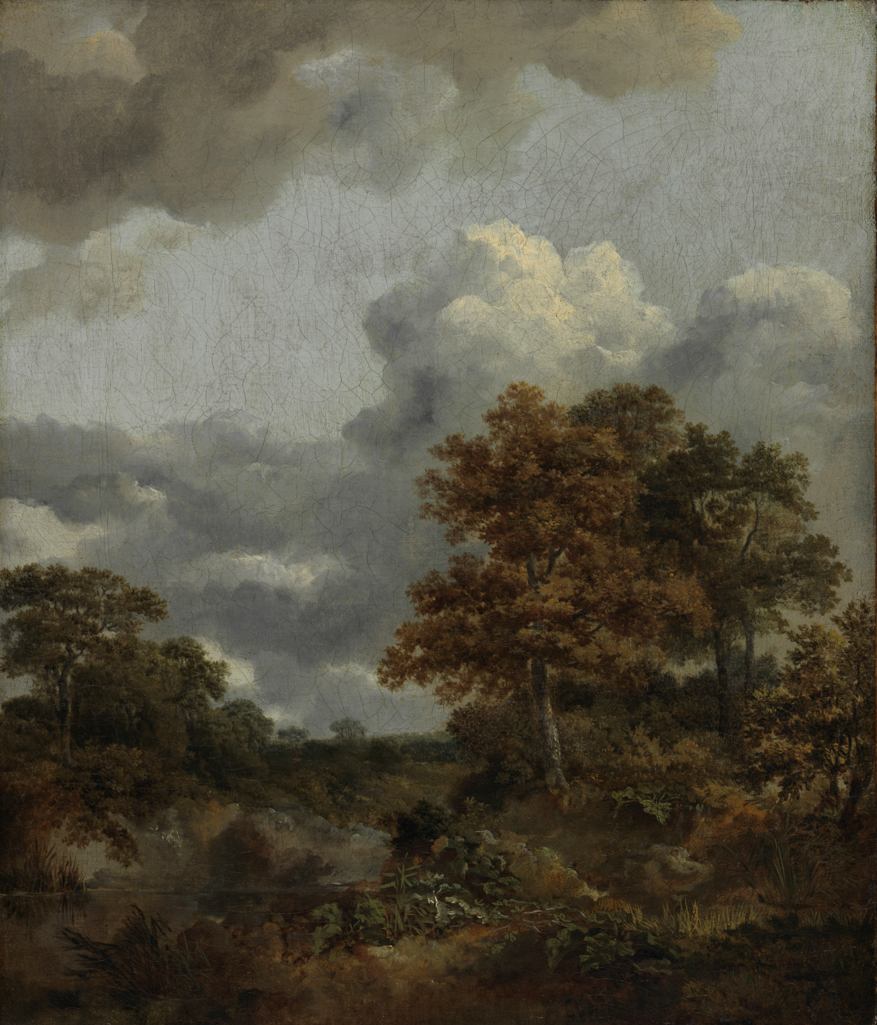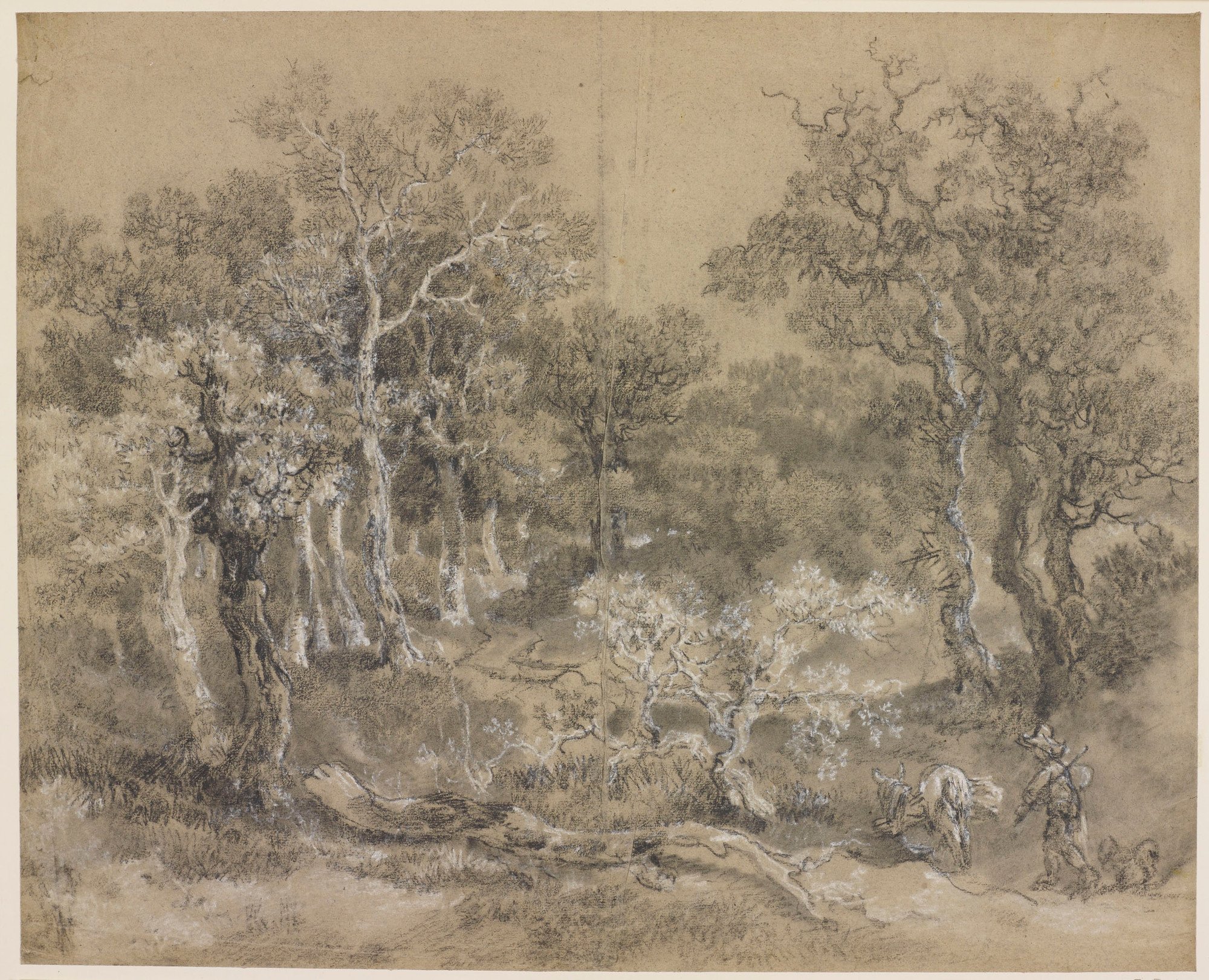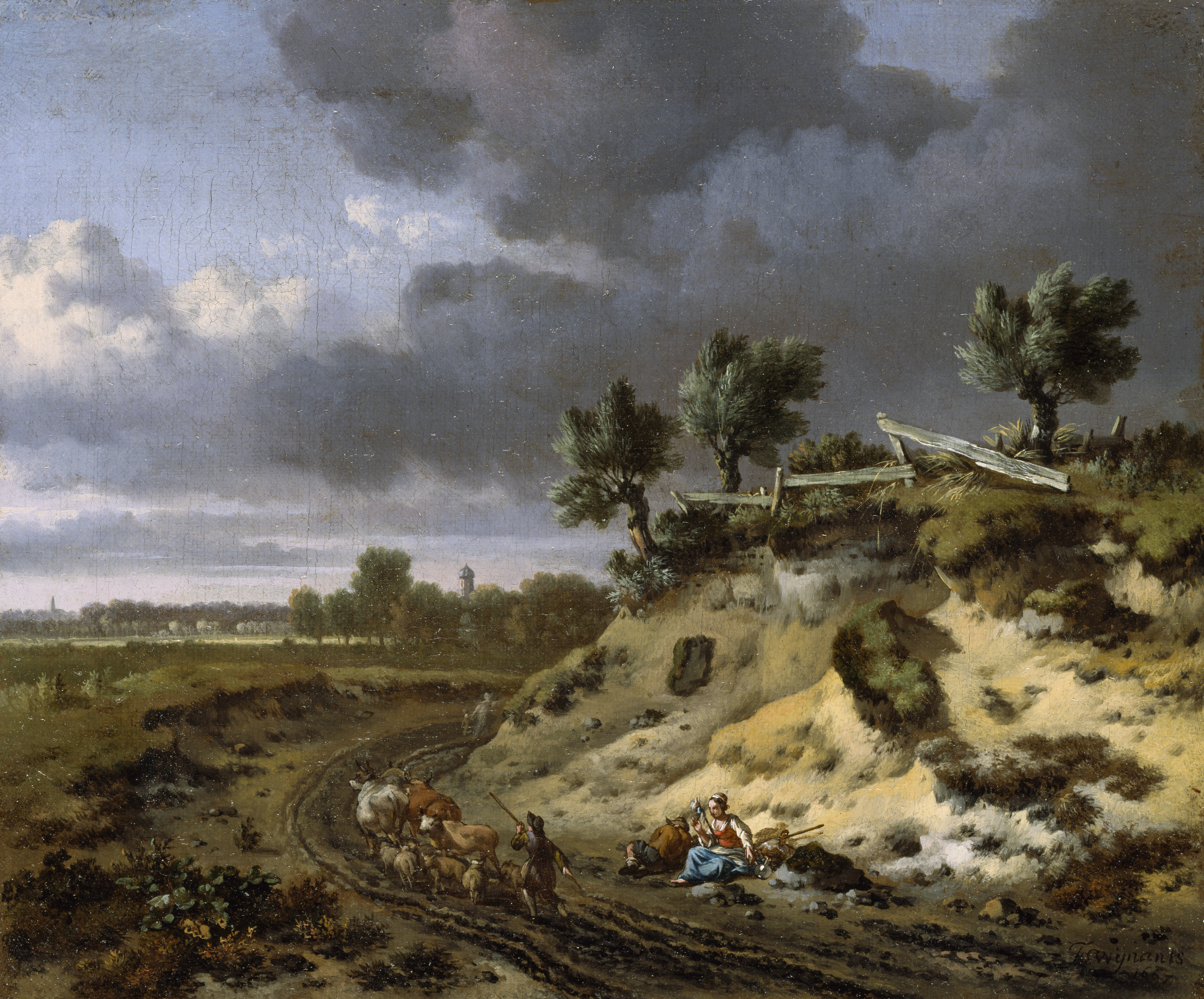
Gainsborough and Dutch Landscape
The first master he studied was Wynants, whose thistles and dock leaves he frequently introduced into his early pictures ... The next was Ruysdale, but his colouring is less sombre...
As a young man, Gainsborough looked carefully at examples of earlier Dutch landscape painting. The countryside of the Netherlands, with its flat fields, sandy banks and winding paths, was very similar to the landscape Gainsborough observed around Sudbury. The paintings he admired most displayed a strong naturalism, with close attention paid to the individuality of trees, plants, clouds and leaf patterns. As Gainsborough’s obituarist observed, two artists had a particularly strong influence on his approach to landscape: Jan Wijnants (c.1635–84) and Jacob van Ruisdael (1628/9–82).
Gainsborough made a direct copy, in black and white chalks, of a painting by Ruisdael. With its prominent central tree, this drawing must have informed the composition for his painting of Cornard Wood.
Ruisdael’s influence can also be seen in the attention Gainsborough paid to dense woodland, plants, leaves and brooding skies in both his drawings and paintings.
While in London, Gainsborough saw paintings by both Wijnants and Ruisdael, as well as other Dutch masters of the previous century, on display in the salerooms and with art dealers. These naturalistic landscapes were extremely popular with collectors in the 1740s. They were relatively small in scale, and their simple subject matter and brilliant details appealed to a growing class of collectors. One of Gainsborough’s early employments was with an art dealer in London, for whom he added figures to paintings by Wijnants and he also repaired Dutch landscape paintings in advance of their sale. Gainsborough would also have encountered the works of Dutch masters through prints.
A winding path next to a sandy bank, with a distant horizon, is a motif Gainsborough saw in paintings by Jan Wijnants.













